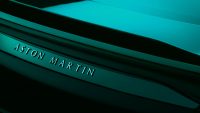 JUST as you do with a Bentley Continental GT, see a top-spec Range Rover with large wheels and special paint, and you think only one thing: Premier League footballer.
JUST as you do with a Bentley Continental GT, see a top-spec Range Rover with large wheels and special paint, and you think only one thing: Premier League footballer.
That’s quite a leap from the original Range Rover’s roots in muddy farmer’s fields.
Back in the early 1970s, the Range Rover had sliding windows, plastic seats… jeez, it even had rubber floor coverings, which could be hosed down. Far removed from today’s half-inch-thick Wilton wool.
That’s just the thing with some cult cars. They can start off with one set of ideas, gradually morph into another – yet, because they’re so iconic, they can get away with anything. Look at the Mini. Look at the Fiat 500.
We would love a Range Rover because, like those two beauties, it absolutely is the real deal. Constructed from the finest materials, with the brilliance of hundreds of Land Rover minds behind it, the latest version is a total class act.
It’s just been facelifted for 2010, introducing a mighty 5.0-litre supercharged V8, boasting – get this – 510bhp. 510 horses! In a Range Rover! That’s good enough to see it scorch from rest to 62mph in just 5.9 seconds. Not bad at all for such a behemoth.
It’ll be a cult in its own right, particularly in black, with a set of 23”s. But that’s not to dismiss the current 4.2-litre supercharged version, either. This engine is also Jaguar-derived, and has also been seen in thousands of Jaguar XKRs. With 400bhp and a wailing engine note, it defies the considerable bulk of the Rangie.
MASTERFUL
The suspension does a masterful job of doing this, too. It’s all-round air, which is adjustable up and down at will. You do this via the Terrain Response dial; just the job if the road to the training ground gets a bit muddy. Or, you decide to stuff the road, brass off the groundsman, and take to the pitch.
Initial work on the current Range Rover was done under BMW’s stewardship. Indeed, the latest Range Rover, when it was launched back in 2003, was actually intended to be an off-road alternative to the 7 Series.
Certainly, it used a large chunk of that car’s electrical gear, which meant it had indulgences such as tri-zone climate control, 14-way electric seats, even a heated steering wheel.
In time, with Ford owning the company, BMW bits were left behind, and trick new gadgets introduced. Such as touch-screen sat nav, ventilated seats – oh, and a personal favorite of Car Dealer Magazine, the wireless outdoor camera. Stick it to the bodywork and watch, on the dash screen, a video of what’s going on outside. The new model extends the theme with even more video feeds.
That camera can also show up pictures of the fans you’re passing, being deafened by your 720-watt Logic 7 Harman/Kardon stereo. But, if you really can’t be bothered with all that, slide into the rear seats, let your minder drive, and watch DVDs of the 1977 League Cup’s third replay.
Today, they’re cheap. Very cheap. You can get an early 2005 model for under £25k. But only with a deal on one of the very latest will you be able to pull off the Premier League look.
RICHARD AUCOCK
Road tests like this appear in Car Dealer Magazine every month – make sure you get your copy by subscribing here (it’s only £17.24 a YEAR)!
































